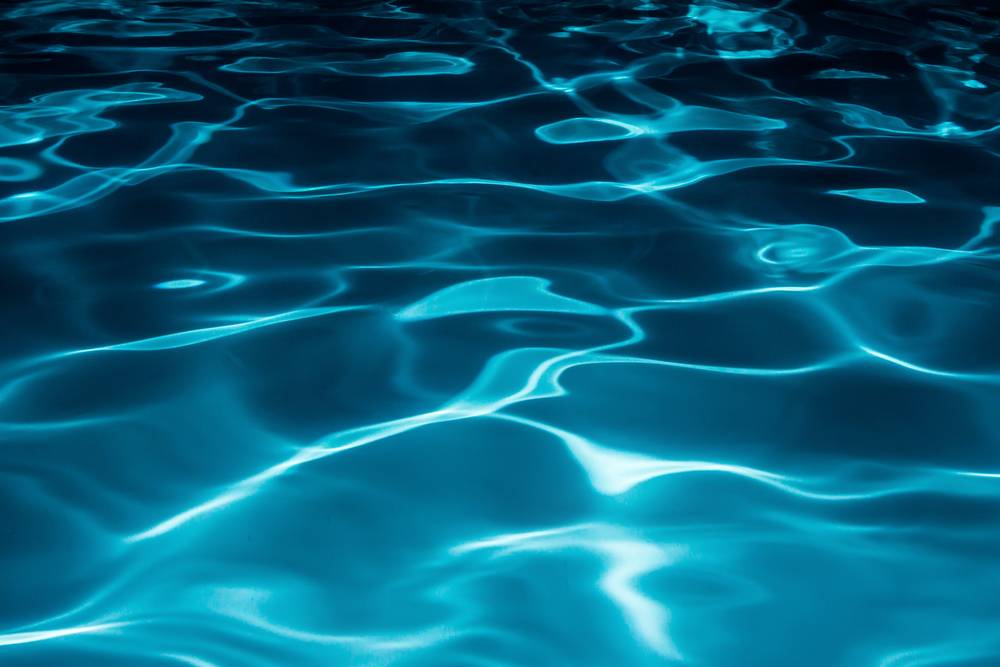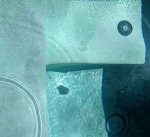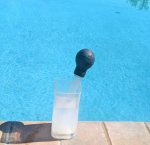I try to stick to facts instead of guesses.
A friend referenced your site as the best for the scientific and DIY home handyman questions I was asking him!
Mainly I'm hoping to learn how to maintain & repair my system as inexpensively as possible.
I'm here for scientific answers, and handyman solutions, mostly.
A bit about my pool background is that I've recently re-opened & refilled the 30K gallon pool with well water two months ago, and am bringing it into balance ever so slowly with a few issues to overcome, where I've read EVERYTHING I can find on the net on pool chemistry (and where I have a science degree so I'm aware most of what's on the net is lacking in details).
The self-cleaning system isn't working well (there are no vacuum ports) so I'm manually brushing, vacuuming & skimming daily, and I'll eventually replace that problematic PCC2000 with a vacuum but that requires plumbing and a pump, so it's a longer-term solution.
My initial problem sets that I will be asking in the appropriate forums for scientific advice are (in order of priority importance):
a. Get the pool chemistry to proper static balance
b. Fix the most critical broken or degraded eqipment (heaters, heater controls, spa jet motor, pop-up cleaning, portable tools)
c. Replace the self-cleaning system (over time) with a more reliable setup
I'm slowly getting to water balance, where my last Leslie's readings were:
FC = 2.88 mg/L
TC = 2.98 mg/L
pH = 7.7
TA = 200 mg/L (should be around 100)
CH = 165 mg/L (should be at least 200)
CYA = 40 mg/L (I brought it up from well water with the granules)
Iron = 0.1 mg/L
Copper = 0.1 mg/L
Phosphates = 0 mg/L
TDS = 450 mg/L
Water is perfectly clear, no algae, temperature is in the high 70s F and low 80s F, only "visible" problems are a fine dust on the plaster and pollen, bugs, and seeds from nearby plants blown into the pool daily. I run the pumps manually daily, and when needed.
I'm a firm believer in HASA 12.5% liquid chlorine (about $4 per gallon in the Silicon Valley), where I add about 1/2 gallon daily at dusk. I've been adding a half gallon of 31.5% HASA muriatic acid ever couple of days and manually aerating to lower the alkalinity.
I need to attack calcium once I get the TA in balance.
Mainly I need to fix/replace equipment as inexpensively & durably as possible.
One perplexing problem I'll ask on the appropriate forums is for scientific help to identify is a fine white dust daily on all the pool plaster surfaces which I need to diagnose as it's not likely algae, nor is it a new pool, nor is the calcium level high (it's too low). I've read everything on this, but what's missing is a way to IDENTIFY the components of that dust chemically (although it's almost impossible to gather up in your fingers but it comes off in swirls with a wire brush).
In summary, I'm here to fight the pool chemistry & equipment and win using scientific brains, but not money (only two people use the pool and I'm the only one with handyman and chemistry experience and I hate wasting money at the pool supply store, particularly since what they sell is overpriced plastic and unnecessary goop in my humble opinion) - where I hope your scientific brains can help me solve my chemistry & repair problems.
Over time (years), I hope to replace the problematic pop-up cleaning system with a pool vacuum (which I can add since the pipes were put in by the pool builder, Lifetime Pools, but there's no pump), where I've rebuilt pumps and done PVC plumbing and replaced Jandy valves, etc..
Mostly, I'm a regular guy, scientifically inclined, who needs your scientific brains to help me solve my problems.
A friend referenced your site as the best for the scientific and DIY home handyman questions I was asking him!
Mainly I'm hoping to learn how to maintain & repair my system as inexpensively as possible.
I'm here for scientific answers, and handyman solutions, mostly.
A bit about my pool background is that I've recently re-opened & refilled the 30K gallon pool with well water two months ago, and am bringing it into balance ever so slowly with a few issues to overcome, where I've read EVERYTHING I can find on the net on pool chemistry (and where I have a science degree so I'm aware most of what's on the net is lacking in details).
The self-cleaning system isn't working well (there are no vacuum ports) so I'm manually brushing, vacuuming & skimming daily, and I'll eventually replace that problematic PCC2000 with a vacuum but that requires plumbing and a pump, so it's a longer-term solution.
My initial problem sets that I will be asking in the appropriate forums for scientific advice are (in order of priority importance):
a. Get the pool chemistry to proper static balance
b. Fix the most critical broken or degraded eqipment (heaters, heater controls, spa jet motor, pop-up cleaning, portable tools)
c. Replace the self-cleaning system (over time) with a more reliable setup
I'm slowly getting to water balance, where my last Leslie's readings were:
FC = 2.88 mg/L
TC = 2.98 mg/L
pH = 7.7
TA = 200 mg/L (should be around 100)
CH = 165 mg/L (should be at least 200)
CYA = 40 mg/L (I brought it up from well water with the granules)
Iron = 0.1 mg/L
Copper = 0.1 mg/L
Phosphates = 0 mg/L
TDS = 450 mg/L
Water is perfectly clear, no algae, temperature is in the high 70s F and low 80s F, only "visible" problems are a fine dust on the plaster and pollen, bugs, and seeds from nearby plants blown into the pool daily. I run the pumps manually daily, and when needed.
I'm a firm believer in HASA 12.5% liquid chlorine (about $4 per gallon in the Silicon Valley), where I add about 1/2 gallon daily at dusk. I've been adding a half gallon of 31.5% HASA muriatic acid ever couple of days and manually aerating to lower the alkalinity.
I need to attack calcium once I get the TA in balance.
Mainly I need to fix/replace equipment as inexpensively & durably as possible.
One perplexing problem I'll ask on the appropriate forums is for scientific help to identify is a fine white dust daily on all the pool plaster surfaces which I need to diagnose as it's not likely algae, nor is it a new pool, nor is the calcium level high (it's too low). I've read everything on this, but what's missing is a way to IDENTIFY the components of that dust chemically (although it's almost impossible to gather up in your fingers but it comes off in swirls with a wire brush).
In summary, I'm here to fight the pool chemistry & equipment and win using scientific brains, but not money (only two people use the pool and I'm the only one with handyman and chemistry experience and I hate wasting money at the pool supply store, particularly since what they sell is overpriced plastic and unnecessary goop in my humble opinion) - where I hope your scientific brains can help me solve my chemistry & repair problems.
Over time (years), I hope to replace the problematic pop-up cleaning system with a pool vacuum (which I can add since the pipes were put in by the pool builder, Lifetime Pools, but there's no pump), where I've rebuilt pumps and done PVC plumbing and replaced Jandy valves, etc..
Mostly, I'm a regular guy, scientifically inclined, who needs your scientific brains to help me solve my problems.
Last edited:





